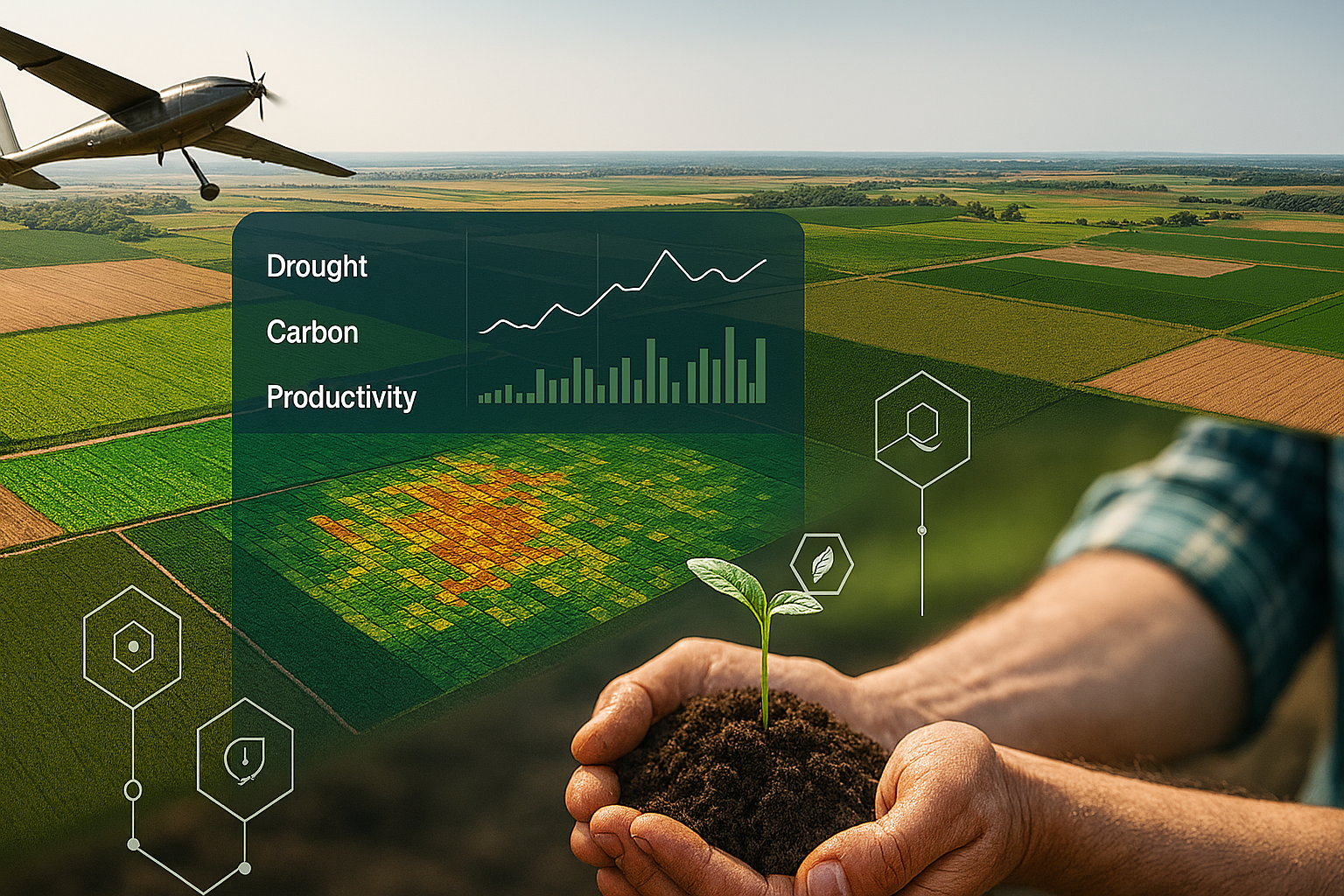The New Language of Soil: Data

Digital transformation extends beyond the soil — it now reaches the skies. Solar-powered autonomous aerial vehicles are ushering in a new era of data collection by enabling carbon-neutral monitoring. Digital soil mapping systems process millions of data points to provide the foundation for sustainable agriculture and environmental policies.
Facing a Dry Future
A study published in Science in March 2025 reveals that over the past 40 years, soils have lost more water than the melting glaciers in Greenland. Today, soil is no longer silent — it speaks through data. Once seen merely as the starting point of food production, soil has now become a "data asset" that is monitored, analyzed, and used to guide decision-making on digital platforms.
With the digitalization of agriculture, soil is turning into a strategic source of information. Thanks to satellites, sensors, and artificial intelligence, fields are observed at the pixel level, and carbon levels can be tracked in real time. Digital systems help detect environmental risks early and reduce the use of chemicals.
Natural biostimulants like humic acid contribute to this process by improving soil health and supporting biological functions. Technological integration brings together productivity and ecological sensitivity.
Data Collection & Security
EU-supported initiatives are shaping the future of soil-centric digital solutions. Now, the voice of the field appears directly on a dashboard — drought, carbon levels, and productivity can be monitored instantly. However, data collection by large platforms raises concerns about farmers losing control over their own data and increasing digital dependency. Data security is becoming a strategic factor that will shape the future of agriculture.
Farmers Are Earning Carbon Credits
Blockchain-based systems not only record farmers' data securely and transparently but also facilitate the verification of environmentally friendly practices. In this way, farmers earn carbon credits by reducing carbon emissions and can generate income through these credits.
Smart Farming, Fair Access
As digital transformation in agriculture grows accelerates, inequalities in access to technology are emerging as a critical concern. That’s why inclusive policies that prioritize not only technology itself but also fair access to it, along with widespread digital literacy education, are of vital importance. Otherwise, the opportunities offered by digital agriculture may turn into a privilege accessible only to certain groups. The European Union’s 2030 Soil Strategy brings this process into a legal framework. With the new Soil Monitoring Directive, all member states are now obliged to regularly monitor soil health and take measures against environmental risks. Now, data not only informs — it shapes policy, guides investment, and builds the future.
Soil Matters – To Everyone
Soil has become a strategic concern for data scientists, investors, and decision-makers. In this era, it will not be just those who cultivate the land who succeed, but those who understand the data the land produces. Because the key to the future lies with those who can understand the language that soil translates into data.
Reference: Kaya, Merve. “The New Language of Soil: Data.” Platin Dergisi, no. 2025/03, Platin Media, pp. 78. Available at: www.platinonline.com
________________________________________________________________________________________________________________________________________
Humintech’s SMART Concept offers a comprehensive approach to transforming soil data into sustainable action. Each pillar — Sustainable, Multifunctional, Areal, Regenerative, and Technologically Advanced — directly aligns with 11 of the UN’s Sustainable Development Goals and supports the digital transformation of agriculture.

